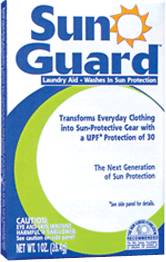
By Dr. Cheryl Hull, dermatologist and owner of Hull Dermatology
With the beautiful, sunny weather we’ve been having lately in Northwest Arkansas, I’ve been seeing more patients in my office with sunburns. People are getting their first big dose of sunshine at local parks, pools, baseball fields, etc., so sunburn is common this time of year. Proper use of sunscreen is vital to protecting our skin, but wearing the correct clothing is also very important and can lighten the burden of how much sunscreen you’ll need to apply.
I know from personal experience that if you’re trying to protect your own skin and one or more family members’ skin, it takes a lot of effort to apply sunscreen every 2 hours! Protective clothing can help simplify this process.
All clothing to some degree can protect your skin, but not all clothing is created equal. Summer-weight fabrics let through an astonishing amount of ultraviolet rays. The clothing factors that help reduce your exposure to ultraviolet radiation include the tightness of the weave, the weight, the type of fiber, the color and the amount of skin covered.
In general, avoid wearing light-colored, lightweight and loosely-woven fabrics when you’re outside. Test a fabric by holding it up to the light. If you can see through it, then UV radiation can penetrate it and affect your skin. For example, a long-sleeved denim shirt offers an estimated UPF of 1,700! (UPF means Ultraviolet Protection Factor.) Also, pick dark colors. For example, the UPF of a green cotton t-shirt is 10 versus 7 for white cotton shirt, and a thicker fabric such as dark velvet has an approximate UPF of 50. Also, when fabric gets stretched or gets thinner from multiple washings and wear (or if it’s wet), its UPF factor is greatly decreased.
I know what you’re thinking. Nobody wants to wear a protective long-sleeved denim shirt on a 90-degree day because it’s just too hot! Here’s an alternative: Look for clothing that has a special weave in certain colors that has been treated during the manufacturing process to block UV rays. These clothing lines can be more expensive but can be well worth the investment in the protection they provide to our skin.
Clothing with special sun protection usually carries a label that has a “UPF” or Ultraviolet Protection Factor rating which indicates how much of the sun’s radiation penetrates the fabric and reaches the skin. For example, a fabric with a rating of 50 will allow only 1/50th of the sun’s UV rays to pass through. This means that 98% of UV rays will be blocked.
 Another great option to increase the UPF factor of all of our clothing is to use a laundry additive, Sun Guard, that contains the sunscreen Tinosorb(R)ED. When this is added to a load of laundry, it increases the UPF of the clothing, and this protection lasts through 20 washings. This additive can be found in most retail stores in the section where fabric dyes are found.
Another great option to increase the UPF factor of all of our clothing is to use a laundry additive, Sun Guard, that contains the sunscreen Tinosorb(R)ED. When this is added to a load of laundry, it increases the UPF of the clothing, and this protection lasts through 20 washings. This additive can be found in most retail stores in the section where fabric dyes are found.
If you’re looking for more sun protective clothing this summer, here’s a short list of companies who offer sun protective clothing lines. Click on the name of each company to visit their site and get more info.
- BTC Innovations (betterthancotton.com)
- Columbia Sportswear (www.columbia.com)
- Coolibar (www.coolibar.com)
- O’Neill (www.oneill.com)
Hope you have a great summer that’s sunburn-free!
 For more info on dermatology-related issues, contact Dr. Hull by calling her office at 479-254-9662. “Beauty Buzz” is sponsored by Hull Dermatology, with offices in Rogers, Bella Vista and at the Eureka Springs Hospital. Dr. Hull has published several scientific papers and has received numerous awards and honors for her work in dermatology. For more info, click here to visit the Hull Dermatology website.
For more info on dermatology-related issues, contact Dr. Hull by calling her office at 479-254-9662. “Beauty Buzz” is sponsored by Hull Dermatology, with offices in Rogers, Bella Vista and at the Eureka Springs Hospital. Dr. Hull has published several scientific papers and has received numerous awards and honors for her work in dermatology. For more info, click here to visit the Hull Dermatology website.
